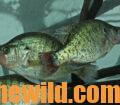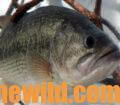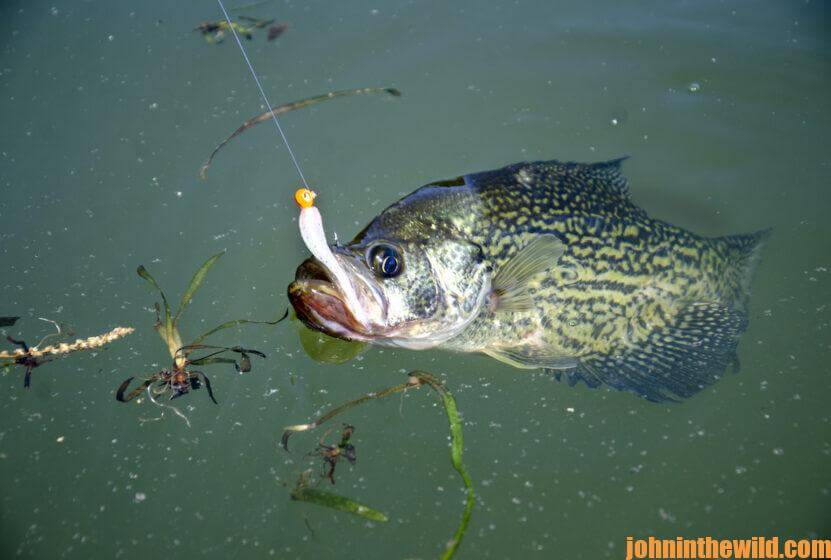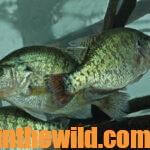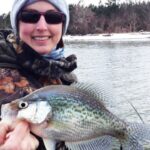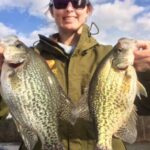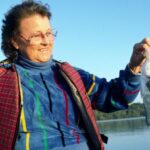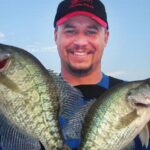Editor’s Note: On a fishing trip with Scott Jernigan and Phillip Criss on Lake Guntersville in north Alabama, we caught plenty of fish. Scott has been a crappie/bass fishing guide for 15 years and has fished for crappie on Guntersville for all his life. Phillip Criss has been a bass-fishing guide for 43 years, and we’ve fished together for the last 30 years.
I’ve learned a new technique from them for fishing for crappie and bass. An interesting part of my education while at Lake Guntersville is that I saw and had an opportunity to fish with a Lowrance ActiveTarget Live Sonar. Much of what I learned on this trip can be applied throughout the U.S. to catch crappie and bass. Also, many of these same patterns will work on other lakes throughout the country, year-round.
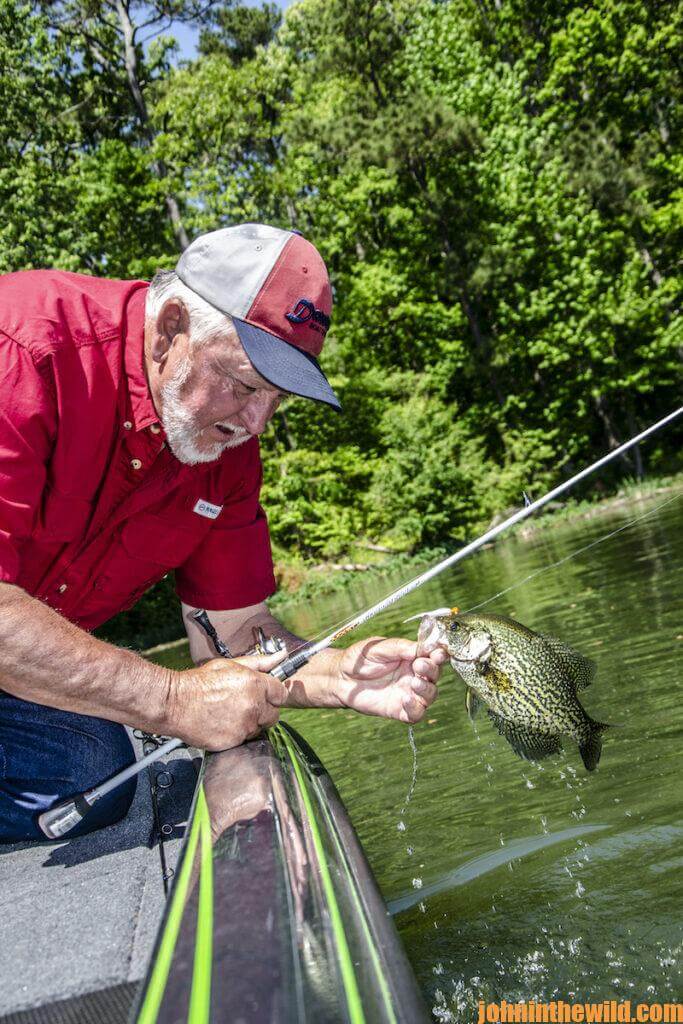
John E. Phillips: Scott, what else do you like about the Lowrance ActiveTarget Live Sonar?
Scott Jernigan: You can turn your trolling motor in any direction, and this forward-facing sonar will enable you to see everything underwater around your boat.
ActiveTarget is much like having a flashlight in a dark room. Any way you point the flashlight, you can see everything you can’t see before you’ve turned on the flashlight.
Also, if you see structure on the bottom or coming up from the bottom, you can know whether fish are holding on that structure and the depth. Then you can cast your baits to see if the fish will bite. If they don’t bite, you can move on to another waypoint that you’ve marked with structure on it.
One of the things I like about ActiveTarget is that you can see the fish swimming through a brush top, and often you can determine the size of a fish in that brush top. You also can see the number of fish holding up on the brush top or any other type of structure. This unbelievable new sonar gives the angler the advantage of seeing in real time the structure and the fish that he wants to catch. Of course, even though ActiveTarget shows you the fish and the structure, there’s no guarantee that the fish will bite. Often I’ll see crappie holding on a brush top and can’t catch them. However, I may come to the same brush top later in the day and limit-out on crappie.
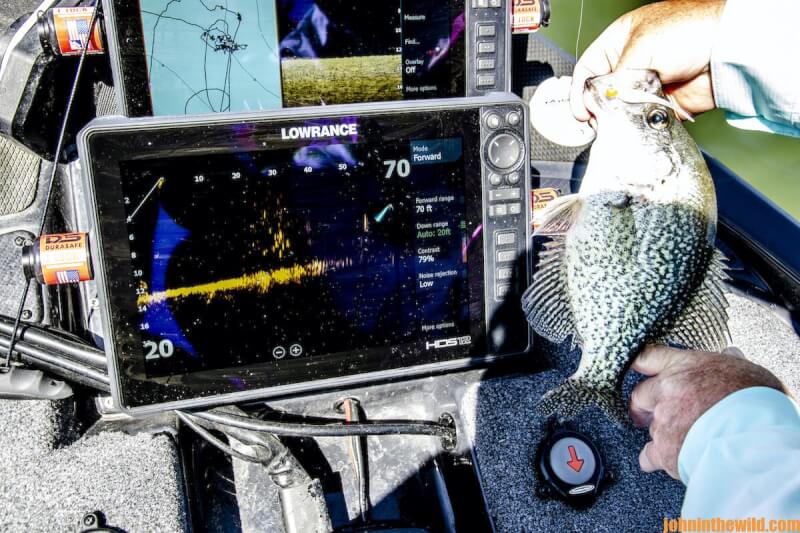
Phillips: Scott, why do you think crappie don’t always bite when you see them with this new sonar? Although you can see the crappie, how many are in the school, the size of the crappie, the distance you are from the crappie, and the direction you need to cast, why can’t you always catch them?
Jernigan: On the way to the lake today, I drove by a McDonald’s, and all I had to do, was pull into the drive-through, order my meal, and I could have eaten. But I just wasn’t hungry. I think that’s what happens many times when we see fish but can’t catch them.
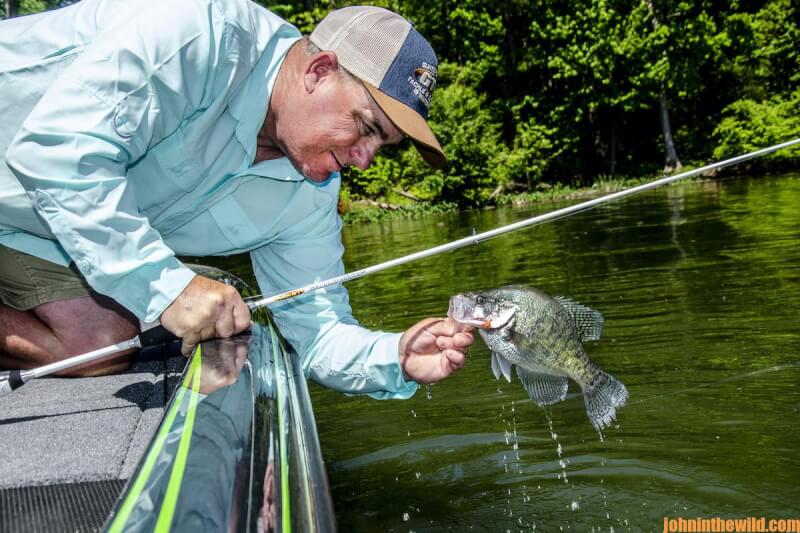
Phillips: Depth finders can be complicated to use, and new depth finders sometimes can be baffling for me and other anglers who aren’t very tech-savvy. How much trouble did you have initially setting the ActiveTarget up and using it?
Jernigan: If you read the instructions and get your settings correct, you can start using ActiveTarget right out of the box. I only have had mine for several months, and I can’t believe how easy it’s been to set-up and use. It’s not as complicated to install and use as many fishermen may think.
Phillips: How effective do you think ActiveTarget is for finding and catching fish?
Jernigan: It’s so effective that many bass tournaments are starting to ban the use of forward-facing sonar.
You can reach Phillip Criss at [email protected]; 205-461-5549. To contact Jernigan, you can call Waterfront Bay Grocery and Tackle (http://waterfrontbaygrocery.com/, 256-582-6060); or at: 706-575-7239. You also can email him at [email protected] or go to his Facebook page: Scott Jernigan (https://www.facebook.com/scott.jernigan.31).
ActiveTarget Video
Tomorrow: Fishing with Scott Jernigan for Bass
Affiliate Disclosure: JohnInTheWild.com is reader-supported. If you purchase anything we mention using our referral links, we may get a small commission. However, there’s no extra cost to you. Thanks for supporting John E. Phillips’ Outdoor Journals!
Expert Guidebooks on Crappie Fishing: Best Sellers
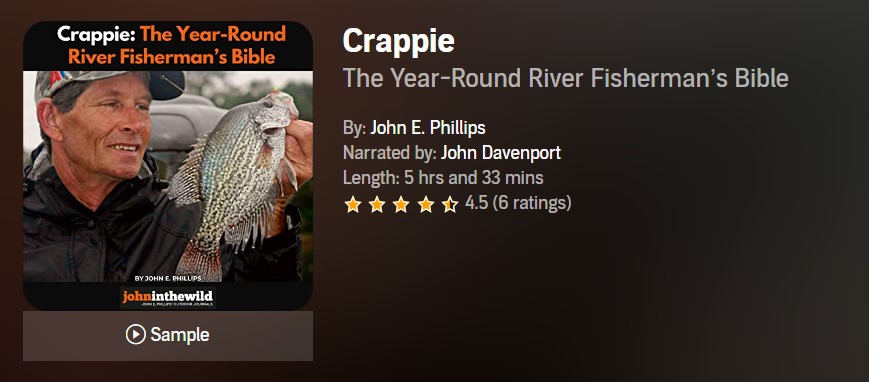
Fishing rivers for crappie and being able to find and catch speckled sides consistently has long been one of the mysteries in the crappie-fishing world.
“One of the reasons that river systems are so difficult to fish is because the water’s either rising or falling in them,” says Ott DeFoe, the 2019 Bassmaster Classic champion.
Rivers also are very susceptible to floods and droughts and constantly have current moving through them. Often fast current or slow current in rivers is created by rain or droughts upstream. When rivers flood, they can wash away fish habitat like logs, sunken trees, manmade brush piles and stake beds. But that’s the time when a river also creates new crappie hot spots that haven’t been available to the crappie or the fishermen before the flood.
Because river systems are so unpredictable, I’ve felt the best way to get the most useful information on how to fish rivers for crappie is to talk to numbers of anglers all over the nation to learn their best tactics.
In this book, I’ve gleaned crappie-fishing wisdom from three dozen crappie anglers and guides from a dozen states, who consistently catch crappie at all times of the year. The tournament crappie fishermen in this book fish most of the country at different times of the year on various river systems and lakes. And, these anglers use techniques you never may have considered, including:
- Setting up a casting ring with your electronics to keep you from getting too close to the crappie that are holding on underwater structure, while you’re fishing all the way around the structure;
- Buying an automotive laser temperature gauge to measure water temperature
- Evaluating the most-productive places to sink brush and other structure, according to prevailing wind direction, the crappie’s summer, fall, winter, and spring migration patterns, and other factors.
VERSIONS: AUDIBLE, KINDLE & PRINT
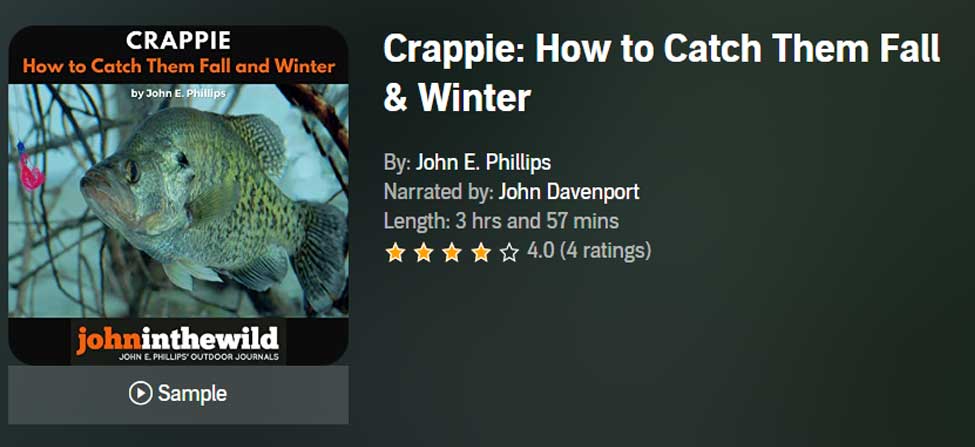
Crappie: How to Catch Them Fall & Winter
Yes, you can catch and eat crappie during the fall and winter months. Often, at many places, you’ll catch more and bigger crappies in the fall and winter than you do in the spring and summer. To learn where to find and how to catch cooler weather speckled sides, we’ve interviewed a wide variety of some of the nation’s best tournament crappie fishermen and guides.
Many of the individuals you’ll hear about in this audiobook are tournament crappie pros who travel the country to fish in crappie tournaments from New York to Florida and from Virginia to California. They use the latest crappie-finding equipment, the best poles, rods, reels, line, and the most-productive baits. Each of the people mentioned in this book has the ability to be dropped out of an airplane anywhere in the United States and catch crappie on any lake close to where they land that contains crappie.
From over 50 years of crappie-fishing experience, I’ve learned that you get the best advice by interviewing a large number of people who have different tactics and fish under various water, weather, and fishing-pressure conditions.
In this book, you will learn:
- How to spider-rig (slow-troll), which is one of the fastest-growing techniques for catching the most and biggest crappies in the shortest time
- How to catch crappie on crank baits and when and where using a crank bait is the most appropriate
- How to find areas of any lake that will hold large schools of crappies during the winter months – places you can return to time and again and expect them to be there
- Why competing in crappie tournaments is one of the quickest ways to learn how to catch more and bigger crappie faster
- Why and how to look for and catch the biggest crappie in a lake
VERSIONS: AUDIBLE, KINDLE & PRINT
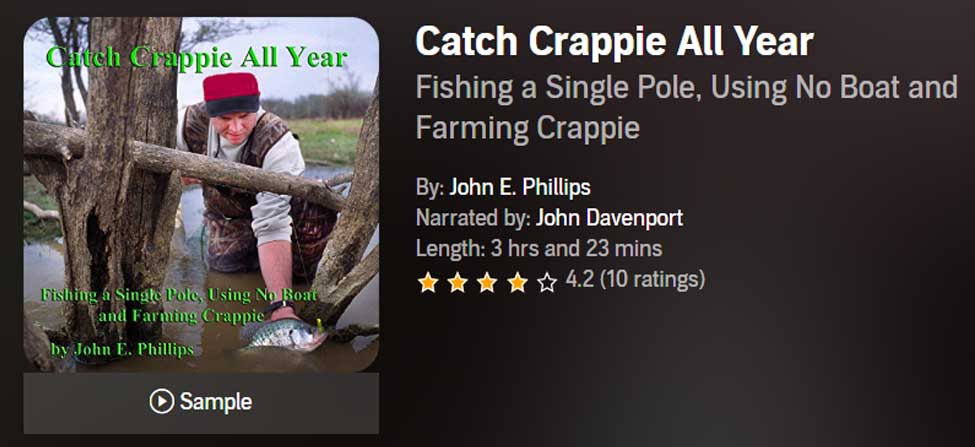
Catch Crappie All Year: Fishing a Single Pole, Using No Boat, and Farming Crappie
I’ve interviewed some of the best crappie fishermen in the nation for my new audiobook, Catch Crappie All Year: Fishing a Single Pole, Using No Boat and Farming Crappie to learn how, where, and when to catch the most crappie with or without a boat while single-pole fishing. I’ve also included information on how to grow a crop of crappie to catch every day of the year. Although I’ve fished in fully rigged crappie boats costing $45,000 – $90,000-plus that can have up to 16 rods at one time to slow troll, I still enjoy….
- Watching a quill cork sink in a brush top
- Fishing with an ultralight spinning rod
- Reeling jigs or minnows along a grass line and feeling that thud when a crappie takes the bait
- Fishing with family and friends, even if we all can’t fit in one boat
- Participating in less-expensive and hassle-free yet highly-productive crappie fishing like single poling
I’ve tried to capture in this new audiobook the old way of crappie fishing with new twists and detailed tactics to aid you in catching crappie all year.
VERSIONS: AUDIBLE, KINDLE & PRINT
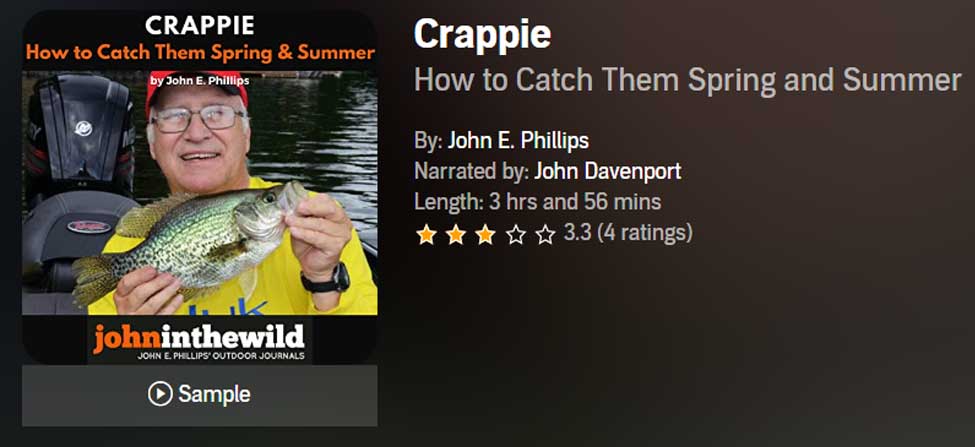
Crappie: How to Catch Them Spring and Summer
You can catch crappie all year long if you know where to find them and what techniques to use to catch them. However, crappie fishing is so technical these days, and we’ve learned so much about how to crappie fish because of the professional crappie-fishing circuits, that one book can’t hold all the information.
This book is the first of a three-part series on how, where, and when to catch crappie, with the best crappie fishermen in the nation. Many of these men have proven they are the best, because they’ve won crappie-fishing tournaments or been successful fishing guides for many years.
This audio version of Crappie: How to Catch Them Spring and Summer includes crappie pros like Ronnie Capps, who has won seven national championships and over $1 million with his partner Steve Coleman.
We also have Malcolm Lane, Stokes McClellan from North Carolina, Billy Blakeley from Reelfoot Lake, John Woods, Kent Driscoll, fishing biologist and professional basser Ken Cook, and many others. We asked the questions that crappie fishermen want answered about how to find and catch crappie during the spring and summer months, and these fishing tips are the result.
In the world of crappie fishing, no one man knows it all, and that’s why I’ve interviewed so many fishermen, asked so many questions, and tried to get so many answers for you about how to fish.
VERSIONS: AUDIBLE, KINDLE & PRINT
When you use the links below to go to Amazon, notice on the left of the Audible option where Amazon says you can hear a sample that gives you 10% of these books for free! On the right side of the page for each book and below the offer for a free Audible trial, you can choose to Buy the Audible book.
Be sure to also check out John’s Free Books as our gift to you!
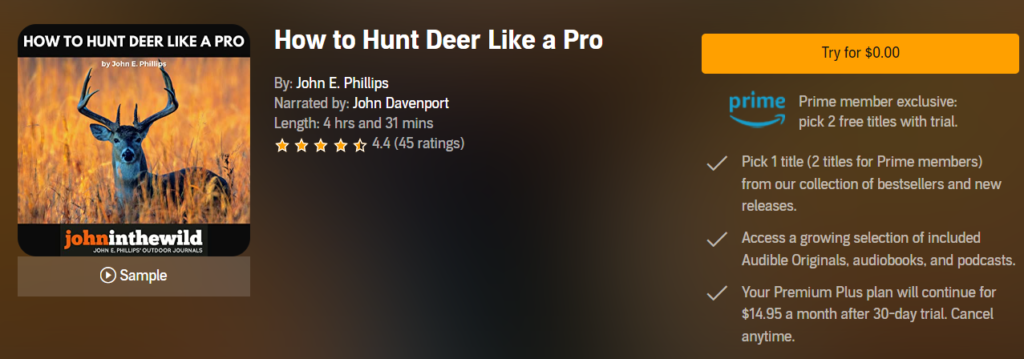
Prime Members: You’re eligible to claim 2 free titles with your 30-day Audible Premium Plus trial! Browse more than 100 of John E. Phillips’ expert guidebooks on hunting and fishing here.
Books By Topic
Category Shortcuts: View on Amazon
| Deer Hunting | Turkey Hunting | Elk Hunting | Bass Fishing |
| Mule Deer Hunting | Bowhunting | Bowfishing | Crappie Fishing |
| All Cookbooks | Hunting Cookbooks | Fishing Cookbooks | All Audible Books |

